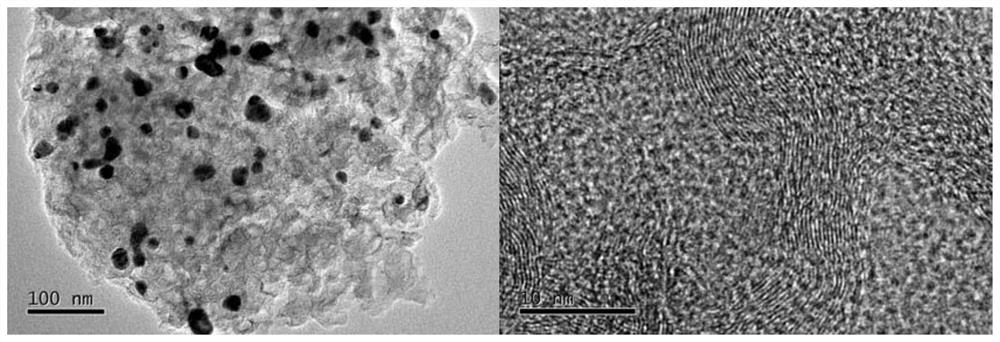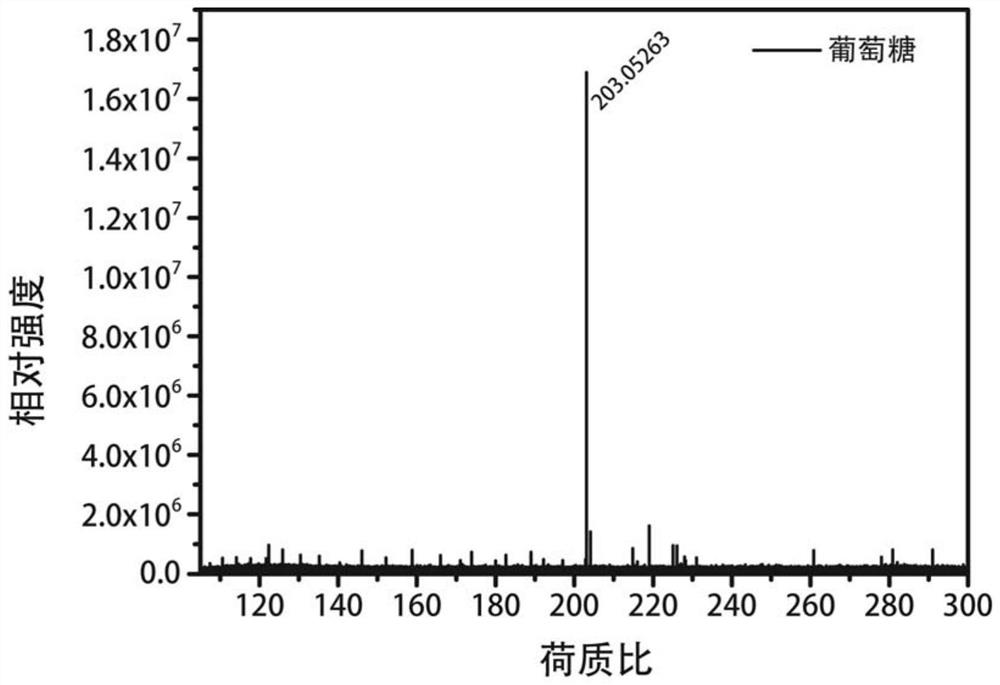Application of metal-nitrogen doped porous carbon materials in mass spectrometry detection
A nitrogen-doped porous carbon and metal technology is applied in the field of mass spectrometry detection, which can solve the problems that small molecular substances cannot obtain molecular weight signals well, difficult to analyze volatile molecules, and difficult to obtain signals, etc., and achieves simple and efficient mass spectrometry detection capabilities. , Improve the detection ability of mass spectrometry, the effect of broad application value
- Summary
- Abstract
- Description
- Claims
- Application Information
AI Technical Summary
Problems solved by technology
Method used
Image
Examples
Embodiment 1
[0048] Example 1, using Co-NC as a substrate to detect thymopentin
[0049] Matrix dispersion: Weigh 5mg of Co-NC powder and put it in 1mL of ethanol, ultrasonically disperse for 20min. Take 1 μL and spot it on the stainless steel target surface, and let it dry at room temperature.
[0050] The preparation concentration is 10 -3 Take 1 μL of the thymopentin solution of M and put it on the dried matrix spot, and let it dry at room temperature for testing.
[0051] Test results such as figure 2 As shown, it can be seen that using Co-NC as a matrix can effectively ionize thymopentin molecules and obtain a spectrum with a good signal-to-noise ratio. And it can be seen in the figure that there is little interference in the small molecule region.
Embodiment 2
[0052]Example 2, using Co-NC as a substrate for enrichment and a detection concentration of 10 -4 M glucose
[0053] Prepare 10 -4 M glucose solution, take 5 mg of Co-NC powder and put it in the prepared 1 mL glucose solution, after ultrasonication for 20 min, take 1 μL spot on the stainless steel target surface, and test after drying at room temperature.
[0054] Test results such as image 3 As shown, it can be seen that after using Co-NC solid to enrich glucose molecules, a spectrum with a good signal-to-noise ratio can be obtained.
[0055] Using conventional DHB as the substrate for a concentration of 10 -4 M glucose samples were tested by mass spectrometry, and the detection results were as follows Figure 4 As shown, it can be seen that the interference is obvious.
Embodiment 3
[0056] Example 3, using Co-NC as a substrate to detect the high-resolution mass spectrum of an alkylthiophene sample
[0057] The preparation method of the matrix dispersion refers to Example 1, and then take 1 μL of the alkylthiophene (formula I) sample and spot it on the dried matrix spot, and enter the instrument for testing.
[0058]
[0059] Test results such as Figure 5 As shown, it can be seen that the molecular weight of the alkylthiophene sample can be obtained using Co-NC as a matrix with a good signal-to-noise ratio. However, the analysis of alkylthiophene with the traditional matrix CHCA cannot obtain the signal of the target molecule. This is due to the high vapor pressure of alkylthiophene, which will quickly volatilize in the vacuum of the mass spectrometer, making it impossible to test using traditional methods. The Co-NC matrix has a porous structure, and due to the large π system, it can effectively adsorb the alkylthiophene, thus protecting the sample ...
PUM
 Login to View More
Login to View More Abstract
Description
Claims
Application Information
 Login to View More
Login to View More - R&D
- Intellectual Property
- Life Sciences
- Materials
- Tech Scout
- Unparalleled Data Quality
- Higher Quality Content
- 60% Fewer Hallucinations
Browse by: Latest US Patents, China's latest patents, Technical Efficacy Thesaurus, Application Domain, Technology Topic, Popular Technical Reports.
© 2025 PatSnap. All rights reserved.Legal|Privacy policy|Modern Slavery Act Transparency Statement|Sitemap|About US| Contact US: help@patsnap.com



